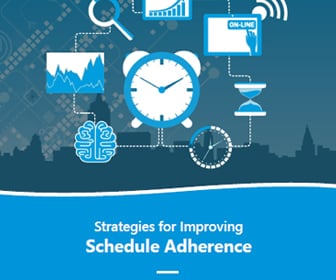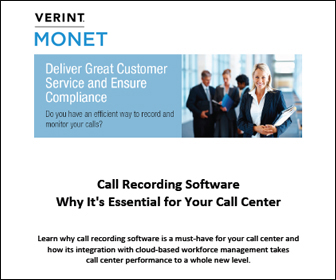Call Center Scheduling Featured Article
Workforce Optimization Software Is About More Than Scheduling
In a busy contact center, scheduling is one of the most vital functions a manager can perform. It’s not only about keeping the customer experience positive by avoiding long call queues and transfers. It’s also about budgeting, hiring, resource allocation and employee engagement and retention. At the core of a great schedule is a workforce optimization solution that lets managers use historical data and information about predictable future events to right-size the workforce throughout the day, week and month.
Once upon a time, managers and analysts used spreadsheets and complex mathematical calculations to build their predictions and estimate required manpower and skills needed. While it was certainly better than nothing, it was time-consuming and nearly impossible to change on-the-fly to accommodate new information. Spreadsheets – which are still used by about 20 percent of contact centers, offer a cumbersome solution to a complex problem, according to a recent white paper by Monet Software (News - Alert).
“Modeling a multi-skilled environment while enforcing abandon targets can become difficult very quickly,” according to the paper’s authors. “Leaving the complex calculations to software can reduce the workload on analysts and managers while allowing them to focus on other tasks.”
But the benefits go beyond automation. Most modern workforce optimization solutions provide dashboards and reports that allow managers to drill down to individual times of day as well as agent groups and even individual agents to “sniff out” barriers to compliance that wouldn’t be visible to spreadsheet-based processes. On the flip side, it puts the manager in a great position to be able to develop best practices for the contact center.
“By analyzing data in an integrated WFO tool, a manager can then reference what processes allowed some agents to have a lower talk time while meeting their quality targets, and then train the rest of the workforce using these processes,” according to Monet. “At that point, a lower average talk time goal may be set for the entire center, resulting in happier customers getting their calls answered more quickly and less overall abandons.”
Today, workforce optimization allows companies to take advantage of benefits unknown to spreadsheet methods. They can, for instance, build a model that involves ever-small increments of time – 15 minutes in some cases – which can help identify specific problems and fix them accordingly. Companies can also take advantage of flexible scheduling, hiring agents who may be willing to vary the start and stop times of their shifts in order to better meet the company’s specific call and contact volume as it changes. (Or offer agents some scheduling flexibility to meet personal and family needs.) The cloud-based nature of many of today’s solutions also allows companies to take advantage of home-based agents.
“When agents can work the hours that work best for them, service levels improve,” wrote Monet. “While every request may not be accommodated, especially when some agents work part time and others work from home, every time a day off request can be granted or an exception approved without impacting service level, it encourages positive job performance that reflects satisfaction with the company. Employee turnover will be reduced as well.”
Monet suggests companies look for solutions with feature sets that will work best with their business processes and goals. At its core, the solution should include accurate call volume forecasting from historical data and ACD integration, flexible schedule creation that incorporates foreseen and unforeseen variables, agent exceptions, intra-day changes to both forecasting and scheduling, and performance management reports.
Accurate forecasts are too critical to a company’s customer support function to leave to twentieth century technology. Web-based solutions can be very affordable, and provide an array of benefits across the entire contact center operation.
Edited by Alicia Young






